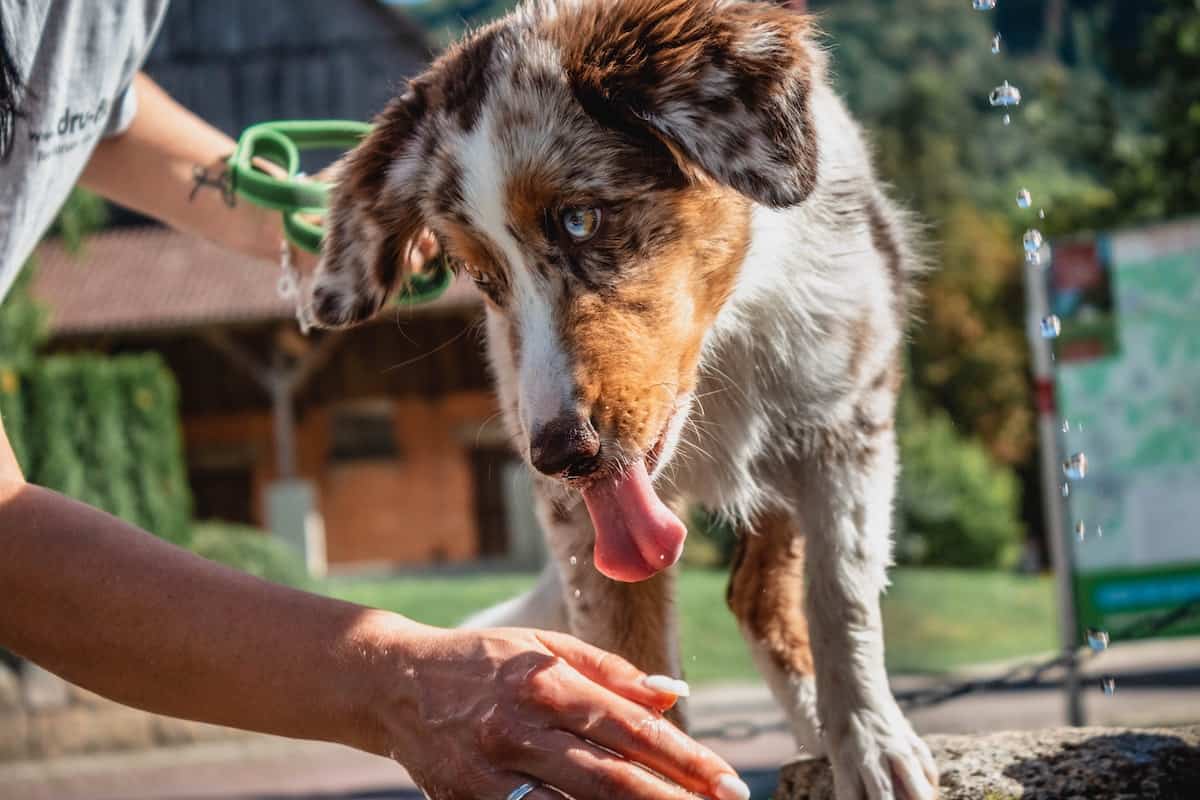Natural Flea and Tick Repellant for Your Furry Friends
Summertime is a great time for outdoor activities with your dog, but it’s also the time of year when fleas and ticks are most active. These pesky critters can cause a lot of problems for dogs, including skin irritation, hair loss, and even tick-borne diseases. That’s why it’s important to use a good flea and tick repellant on your dog.
So, how do you make a natural flea and tick repellant for dogs? The easiest way to make a natural flea and tick repellant for dogs is to mix equal parts of water and vinegar. You can either use white vinegar or apple cider vinegar. Then, add a few drops of lavender oil or eucalyptus oil to the mixture. Lavender oil is a natural flea repellant, while eucalyptus oil repels both fleas and ticks.
In this blog post, we will teach you how to make a natural flea and tick repellant for your dog using ingredients that you probably already have in your kitchen!
What Are Fleas?
Fleas are small, wingless insects that are about the size of a grain of salt. They are dark brown or black and have piercing mouthparts that they use to feed on the blood of animals.
Fleas are most commonly found on cats and dogs, but they can also infect other animals, including rabbits, rodents, and even humans!
Dangers of Fleas for Dogs
While fleas may be small, they can cause big problems for your dog. Flea bites can cause your dog to itch and scratch uncontrollably, which can lead to hair loss and open wounds. In addition, fleas can transmit diseases to your dogs, such as typhus fever and tapeworms.
Identifying Fleas On Your Dog
If you think your dog has fleas, there are a few things you can look for. First, check for tiny black specks on your dog’s skin. These are flea droppings and are a sure sign that your dog has fleas.
You can also look for small, brown insects crawling on your dog’s skin or in their fur. Finally, if your dog is excessively scratching or biting at its skin, this may be a sign that they have fleas.
What Are Ticks?

Ticks are small, spider-like creatures that feed on the blood of animals. They are most commonly found in wooded or grassy areas, and they can attach themselves to any part of your dog’s body.
Ticks can range in size from less than a quarter of an inch to more than an inch long!
Dangers of Ticks for Dogs
Ticks can cause several problems for dogs, including skin irritation, hair loss, and Lyme disease. Lyme disease is a serious infection that can cause fever, joint pain, and even death in dogs. If you live in an area where ticks are common, it’s important to check your dog for ticks after every walk or hike.
Identifying Ticks On Your Dog
The best way to find ticks on your dog is to conduct a thorough tick check after every walk or hike. Ticks are usually found in the warmer parts of your dog’s body, such as their armpits, groin, and around their ears. To properly remove a tick, use a pair of tweezers to grab the tick by the head and pull it straight out.
Reasons to Use a Natural Flea and Tick Repellent
There are many reasons to use a natural flea and tick repellent on your dog. First, natural repellents are safe for both dogs and humans. Second, they are effective at repelling fleas and ticks.
Third, they are much cheaper than commercial repellents. Finally, they are easy to make at home with ingredients that you probably already have in your kitchen!
Types of Flea and Tick Repellent for Dogs
There are two main types of flea and tick repellents for dogs: topical repellents and oral repellents. Topical repellents are applied directly to the dog’s skin, while oral repellents are given to the dog in pill form.
Step-by-Step Instructions for Making a Flea and Tick Repellent for Dogs
Making a natural flea and tick repellent for dogs is easy! Simply mix equal parts of water and vinegar in a spray bottle. Then, add a few drops of lavender oil or eucalyptus oil to the mixture. Lavender oil is a natural flea repellant, while eucalyptus oil repels both fleas and ticks.
To use the repellent, simply spray it on your dog’s coat before going outside. Be sure to avoid their eyes, nose, and mouth. You can also spray it on their bedding or any areas where they like to rest.
Ingredients
- ½ cup apple cider vinegar
- ½ cup water
- ¼ teaspoon lemon juice
- ¼ teaspoon eucalyptus oil
- ¼ teaspoon lavender oil
Instructions
- Combine all ingredients in a spray bottle and shake well.
- To use, spray onto your dog’s coat, being sure to avoid their eyes, nose, and mouth. You can also spray it on their bedding or any areas where they like to rest.
Note: If you do not have any essential oils on hand, you can omit them from the recipe. The vinegar and water mixture will still be effective at repelling fleas and ticks.
Do You Need to Use Essential Oils in Flea and Tick Repellent?
While essential oils are not required, they can help repel fleas and ticks. Lavender oil is a natural flea repellant, while eucalyptus oil repels both fleas and ticks. If you do not have any essential oils on hand, you can still make an effective repellent by mixing equal parts of water and vinegar.
How Often to Use Flea and Tick Repellent

You should use flea and tick repellent on your dog as often as necessary. If you live in an area where fleas and ticks are common, you may need to use it every day.
If you only take your dog outside occasionally, you can probably get away with using it once a week or so.
Should You Use Flea and Tick Repellant Year-Round?
If you live in an area where fleas and ticks are common, you should use repellent year-round. However, if you only take your dog outside occasionally, you can probably get away with using it during the warmer months when fleas and ticks are most active.
Risks of Using Natural Flea and Tick Repellent
There are some risks associated with using natural flea and tick repellents.
Skin Irritation
The most common risk is skin irritation. If your dog has sensitive skin, it may experience redness, itchiness, or swelling after using the repellent.
Reduced Efficacy
Another risk is that the repellent may not be as effective as a commercial product. If you live in an area with a high population of fleas and ticks, you may need to use a stronger repellent.
Alternatives to Natural Flea and Tick Repellent
If you’re concerned about the risks of using a natural flea and tick repellent, there are some alternatives.
Commercial Pest Repellants for Dogs
You can purchase commercial repellents that contain chemicals, such as pyrethrin or permethrin.
Spot-On Pest Repellants for Dogs
You can also have your dog treated with spot-on products that contain insecticides. These products are applied directly to the dog’s skin and kill fleas and ticks on contact.
Veterinarian Pest Repellant Prescription for Dogs
You can also ask your veterinarian for recommendations. They may be able to prescribe a medication that will help repel fleas and ticks.
Do Humans Need Flea and Tick Repellent?
No, humans do not need flea and tick repellent. However, if you have fleas in your home, you may want to use natural repellent to keep them away.
Vinegar and essential oils can also help repel other pests, such as ants and mosquitoes.
Can Humans Get Fleas From Dogs?
Yes, humans can get fleas from dogs. If you have a flea infestation in your home, you may be at risk of getting fleas. However, the risk is relatively low.
To prevent fleas from infesting your home, make sure to vacuum regularly and wash your bedding in hot water.
Can Humans Get Ticks From Dogs?
Yes, humans can get ticks from dogs. If you find a tick on your dog, there is a risk that you could contract a disease from it. However, the risk is relatively low. To prevent ticks from infesting your home, make sure to vacuum regularly and wash your bedding in hot water.
Do Cats Need Flea and Tick Repellent?
Yes, cats need flea and tick repellent. Fleas can cause anemia in cats, and ticks can carry diseases that are dangerous to both cats and humans. You can use the same natural repellent on your cat that you use on your dog.
Be sure to avoid their eyes, nose, and mouth when applying it. You may also want to consult with your veterinarian before using any type of repellent on your cat.
The Bottom Line
Natural flea and tick repellents are safe for both dogs and humans. They are effective at repelling fleas and ticks, and they are much cheaper than commercial repellents. By making a natural flea and tick repellant for your furry friends, you can help keep them safe and healthy!
Related Questions
How often should you bathe a dog with fleas?
If your dog has fleas, you should bathe them as often as necessary. You may need to bathe them every day or every other day until the fleas are gone. Be sure to use a mild shampoo so you do not irritate their skin.
What is the best way to get rid of fleas in your house?
To get rid of fleas in your house, you should vacuum regularly and wash your bedding in hot water. You can also use a natural repellent, such as vinegar or essential oils. If you have a severe infestation, you may need to call an exterminator.

